The Galapagos Islands conservation depends on adopting innovative technologies. In this installment of our series about science and technology to conserve the environment, we examine how drones can help protect the fragile eco-systems of the Archipelago. Drones combine aerial perspectives and advanced tools to enable more precise and efficient monitoring. This helps protect endemic species, and study hard-to reach habitats.
Drones: a new era in environmental monitoring
Drones have revolutionized the way we monitor ecosystems on Galapagos. Galapagos Conservancy uses drone technology to advance conservation initiatives with the permission of the Galapagos National Park Directorate.
Drones can fly over areas that are inaccessible, such as Isabela Island’s active volcanic cones or Fernandina Island’s rugged coasts. This allows them to provide detailed and real-time images of ecosystems.
Drones equipped with GPS and high-resolution cameras capture precise images that help researchers monitor vegetation health and study animal behaviour. These capabilities can be combined with other technologies such as ground-based camera traps, which have a limited range and scope. Drones provide a bird’s eye view that complements these ground-level technologies. They can be used to gain a better understanding of ecosystems and track wildlife in vast areas or difficult-to-reach places, as well as detect changes in the landscape.
Supporting Terrestrial Ecosystem Conservation
The use of drones is essential for the monitoring of terrestrial ecosystems on Galapagos. They can capture images of key species and remote landscapes.
Drones are especially useful in difficult areas, such as the Wolf Volcano of Isabela Island — home to a unique species giant tortoise and pink iguana . They allow for efficient data collection and provide insight into habitat conditions. They also support efforts to save these iconic species.
Drones are versatile enough to be operated at various altitudes, in a variety of weather conditions and capture high-resolution photos that provide valuable information about wildlife, vegetation and other environmental factors.
Drones can also be used to survey large areas, detect invasive species, and take swift action in order to protect the native biodiversity.
Conservation and the Future of Conservation
Drones will continue to be a valuable conservation tool in Galapagos as technology advances. Drones enable more precise ecosystem analyses and support rapid adaptation to changes in the environment, contributing to informed decision making and effective conservation strategies.
Galapagos Conservancy, with the support of its donors and partners will continue to harness drone technology and other innovative solutions to protect the unique biodiversity of the archipelago, and ensure that it is preserved for future generations.
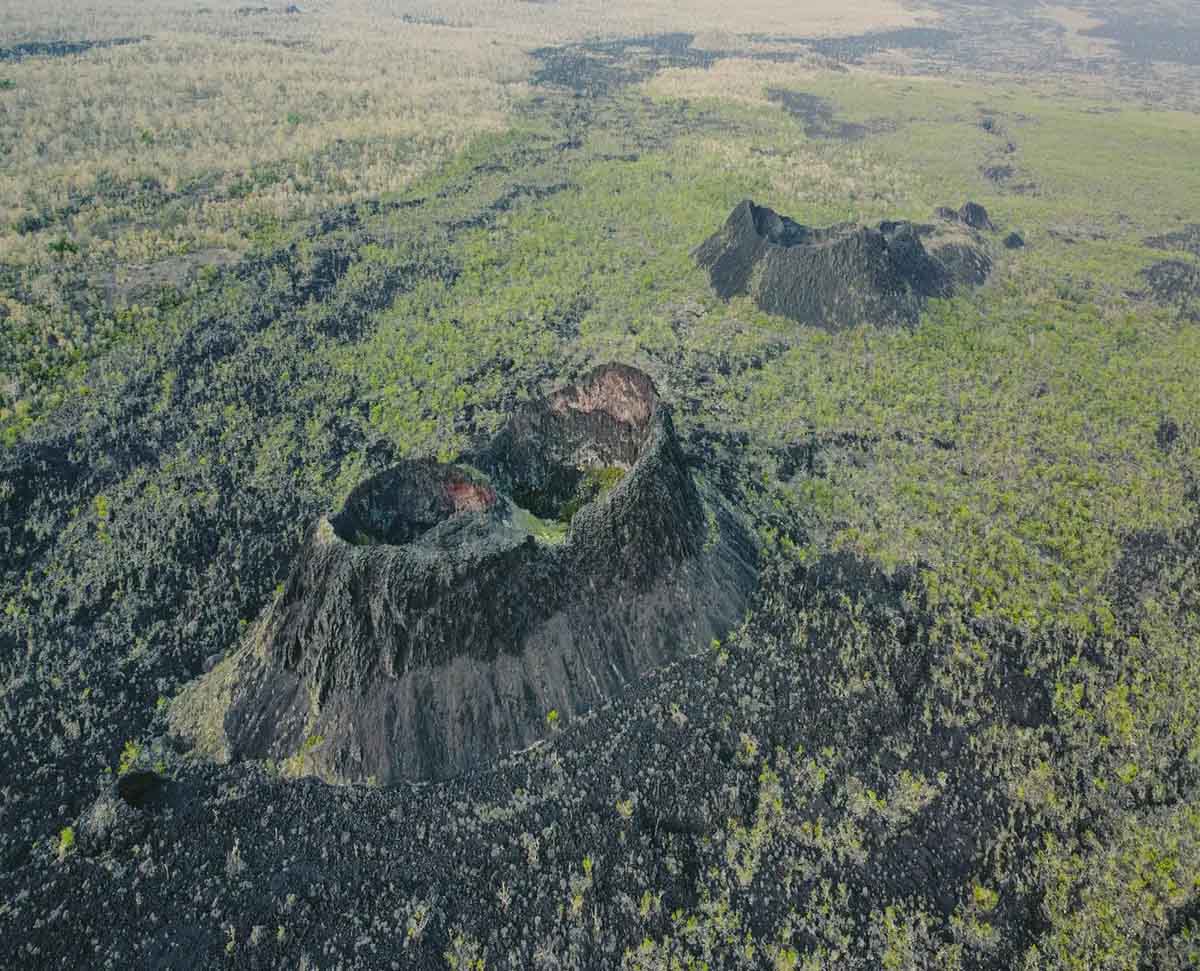
Photo: ©Galápagos Conservancy
The Galapagos giant turtle’s recovery is a great example of how scientific insights can be used to create innovative conservation. In 1965, captive rearing programs were established for giant tortoises. These programs have been crucial to the recovery of several tortoise species. The programs are designed to raise tortoises safely during the first five years of their lives, when they’re most vulnerable to predators, food shortages and water scarcity. It would not have been possible to bring giant tortoises back from the brink without the dedication of those who work behind the scenes. Galapagos Conservancy works with Galapagos National Park Directorate in order to run breeding centres.
Walter Chimborazo’s Dedication
Our experts can make a difference. Walter Chimborazo, is one of these experts. Walter Chimborazo is a friendly and familiar face at the Fausto Llerena Breeding Center in Santa Cruz Island. He works with park rangers there to ensure the well-being and safety of thousands of young tortoises.
Walter’s dedication is evident in his days: he distributes greens every Monday, Friday, and Wednesday to the tortoises. Walter cleans the corrals of the tortoises on other days and makes sure they get enough sun to maintain a healthy body temperature and growth. Walter is on call seven days a weeks during nesting season to adjust the temperature in incubators to optimize development. Walter is the Godfather to thousands of these gentle giants. The most rewarding part for him is watching them grow.
Cristian Gil: A Passionate Trip to Galapagos
Cristian’s commitment is evident at the Arnaldo Tupiza breeding center on Isabela Island. The center was established in 1995 and serves as a sanctuary for the threatened tortoises of the island. Galapagos Conservancy funded recent upgrades at the center. These include breeding pens and improved enclosures. The upgrades improve the lives of the tortoises while allowing the staff to provide better and less disruptive care. They also demonstrate their renewed commitment towards the tortoises.
The story of Cristian l, another of our turtle experts is equally inspiring. He was raised on Isabela Island on the flanks the Sierra Negra volcano, where he witnessed the dramatic decline of the giant tortoises. Cristian’s passion for protecting his native land led him to study environmental science, and then join the team at Galapagos Conservancy.
Collaboration for a Sustainable Future
This successful collaboration with Galapagos National Park Directorate has enabled us to add a human touch to our breeding centers. Walter’s commitment to Santa Cruz, and Cristian’s to Isabela are just two examples. We can continue this success story through continued collaboration, dedication and innovation on the grounds. The power of collaboration is what makes all this possible.
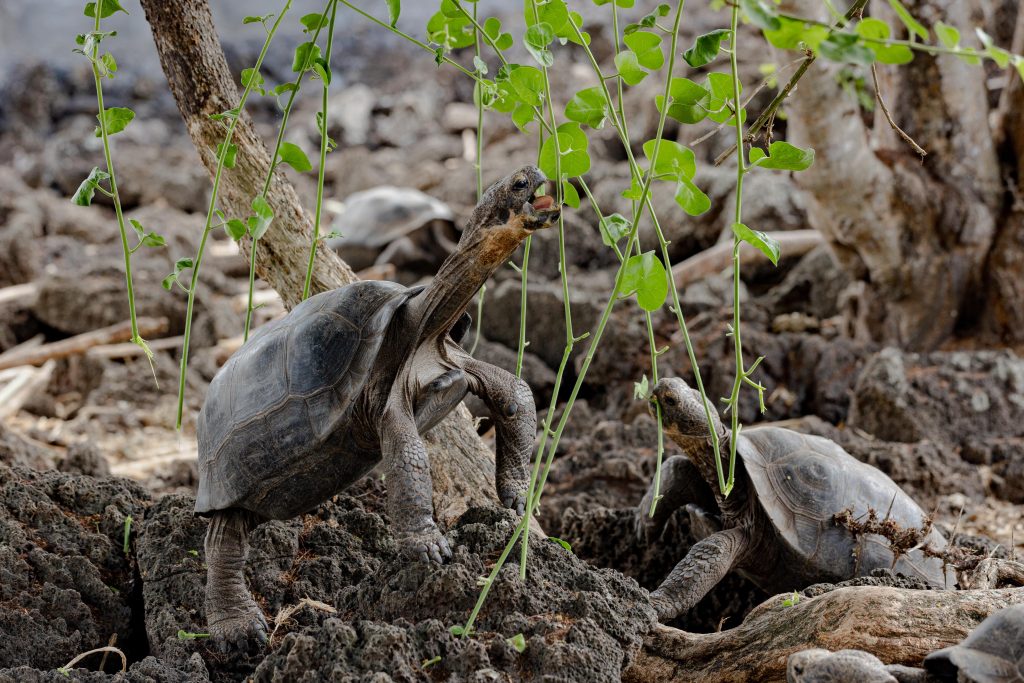
©Galápagos Conservancy
Galapagos Conservancy proudly supports the conservation efforts of Galapagos National Park Directorate. This includes the Project for Resilient Corals in the Central-South Bioregion, Galapagos Marine Reserve. This initiative is designed to protect coral reefs, one of the most fragile ecosystems within the reserve. These reefs are vital to the health of marine life and are a great attraction for both scientists and tourists.
Coral Resilience: a Positive Outlook
The hard work of park rangers has made significant progress this year. In the Central-South Bioregion, you will find sites like Santiago, Floreana and Espanola that were once famous for their vibrant corals reefs. Climate change and other factors have had a severe impact on these ecosystems.
Corals that remain in these areas tell not only the story of Galapagos, but also offer important insights on resilience and adaptability in the face adversity. Corals are vital to marine ecosystems. They’re often called “the lungs” of the ocean. Corals provide habitat for many species and form natural barriers to protect coastal areas against erosion.
Scientists continue to monitor the reefs and have found that certain coral species are resilient. Certain corals adapt and find ways to thrive and survive despite stressors like rising water temperatures. This adaptation is vital for their survival, and provides valuable lessons about how ecosystems can cope with future challenges.
Coral Health Monitoring and Improvement
The project’s main objective is to evaluate the health of coral fragments from the islands of Santa Cruz, Floreana and Espanola. We have updated our map of coral fragments in the reserve thanks to fieldwork and research expeditions. These fragments of coral are carefully being cultivated at the nursery in Bahia Academia in Puerto Ayora in “beds” made from ropes and mesh to protect them against harmful light and environmental factors.
Corals are resilient despite facing many challenges. Monitoring has shown that since June 2024 there has been an increase in the presence of algae, which negatively impacts the health and survival of corals. This has caused a 20% mortality rate for branching corals as well as a 30% death rate in older nursery fragments. Massive corals, however, have been able to withstand bleaching. It is important to control the growth of Ulva, a type of green alga, and red filamentous bacteria.
Community Engagement and Collaboration
This project would not have been possible without the participation of local volunteers. The community, especially young people, has shown a strong commitment in supporting coral reef cleaning and monitoring activities. Their participation not only helps maintain these ecosystems, but also inspires future generations to become environmental advocates.
Look to the Future
Our project also aims to identify the coral species that are most resistant. We are collecting data about how coral colonies react to temperature changes, which is important for the conservation and global restoration strategies of Galapagos Corals.
We organized a coral-cleaning event recently at the Bahia Academia Coral Nursery, where we care for 185 fragments of coral from eight different species. This is important because the growth of algae tends to be more pronounced during colder months. We provide space in the nursery for corals to grow and then transplant them to areas of the ocean that require restoration.
This collaboration with Galapagos National Park Directorate will be vital to restoring biodiversity and protecting Galapagos’ unique marine treasures. We remain committed to conservation efforts to preserve the rich marine life of the Galapagos.
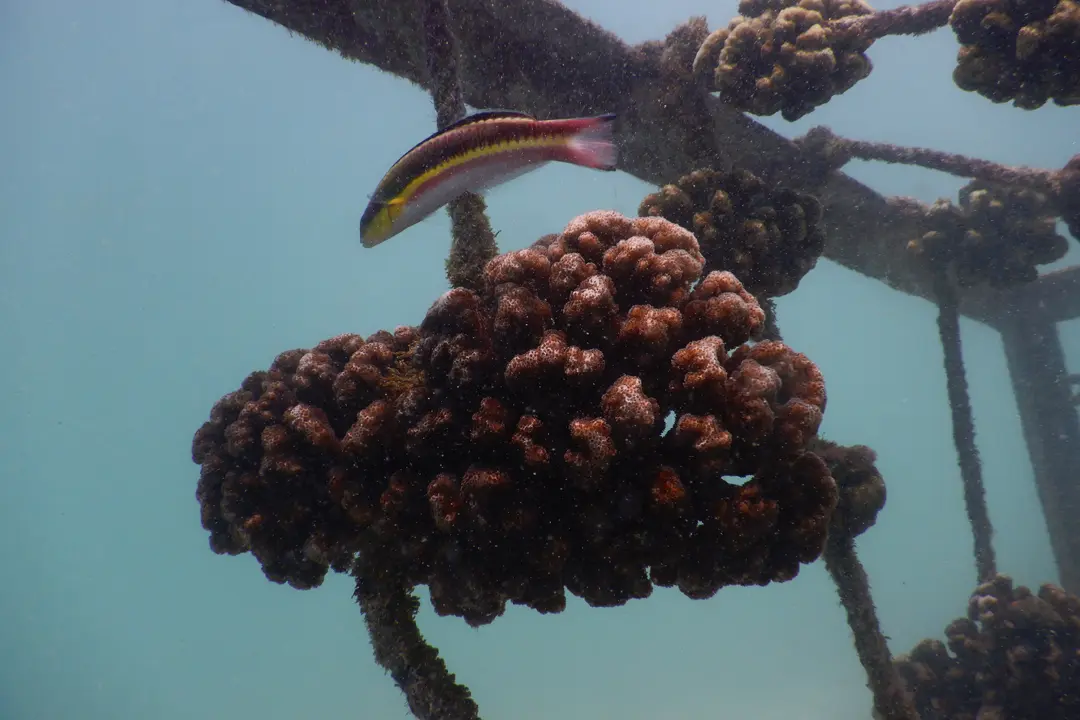
©GNPD
Galapagos Conservation believes in the power community has to protect the unique eco-systems of the archipelago. Ocean Scouts Group No. 1 will be empowered by Silversea Cruises in partnership. In Galapagos, 17 members will become certified scuba diver. This initiative teaches these young aquanauts diving and underwater exploration techniques, eventually building a team of locals capable of ocean conservation underwater projects.
A Unique Experience
The eleven participants who earned their scuba certification have achieved a major milestone. They learned the essential diving techniques with the help of experts. The training they received has allowed them to explore the Galapagos Marine Reserve. This reserve is home to many unique species, including sharks, mantas rays and sea turtles.
In San Cristobal Island in Puerto Baquerizo Moreno there was a strong community interest in this project. Many families supported their children actively. Through coordinated dives, and teamwork underwater, the scouts developed a lasting relationship with the ocean. The Galapagos Marine Reserve is better protected when young people have first-hand experience of the marine life. This will instill a sense responsibility that will last generations. One participant was so excited about their experience that they said: “I’d never imagined seeing a shark up-close.” Now I feel like it’s my duty to protect them.”
Learning to overcome challenges
Participants faced challenges throughout the project. One of these was balancing diving training with school obligations. Teamwork was essential to overcome these obstacles. One scout was a leader who inspired his peers to complete certifications. The scouts developed a sense of camaraderie and improved their problem-solving and confidence skills. These young people’s growing leadership skills highlight their potential to inspire others. They are becoming more skilled divers, and they will be passionate advocates for the Galapagos Marine Reserve.
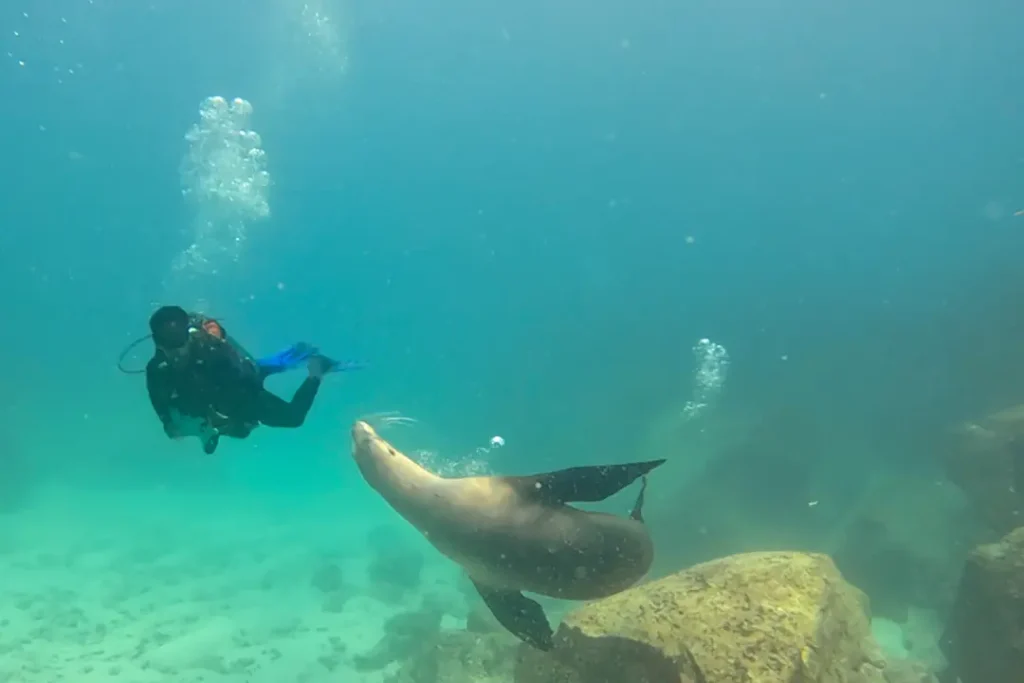
Photo: ©Scouts Galápagos
A Lasting Legacy
This project has a far-reaching impact. It goes beyond the training of skilled divers. It represents the Galapagos Conservancy’s commitment to conservation and sustainability in the Galapagos Archipelago. By providing young people with the knowledge and skills to protect their marine environment, these ambassadors can help conserve the unique marine biodiversity of their home. This initiative demonstrates our commitment to ocean protection by supporting marine environmental education.
This legacy enriches the lives of young people and benefits future generations through the promotion of a culture that values and cares for nature. These youths, as they continue their learning and discovering journey, embody the hope of a future in which marine conservation will be entrusted only to those who understand and value it. We are committed in building a community of people who actively protect the Galapagos Marine Reserve to ensure its beauty and natural riches are preserved for many years to come.
A Call to Action
Join us in our conservation efforts. Supporting initiatives such as the Ocean the Scouts diving training program empowers the youth in Galapagos and helps them protect one of the most valuable ecosystems on the planet. Together, we can make sure that the oceans in Galapagos are a vibrant refuge for many of its unique species and leave a lasting legacy for future generations.
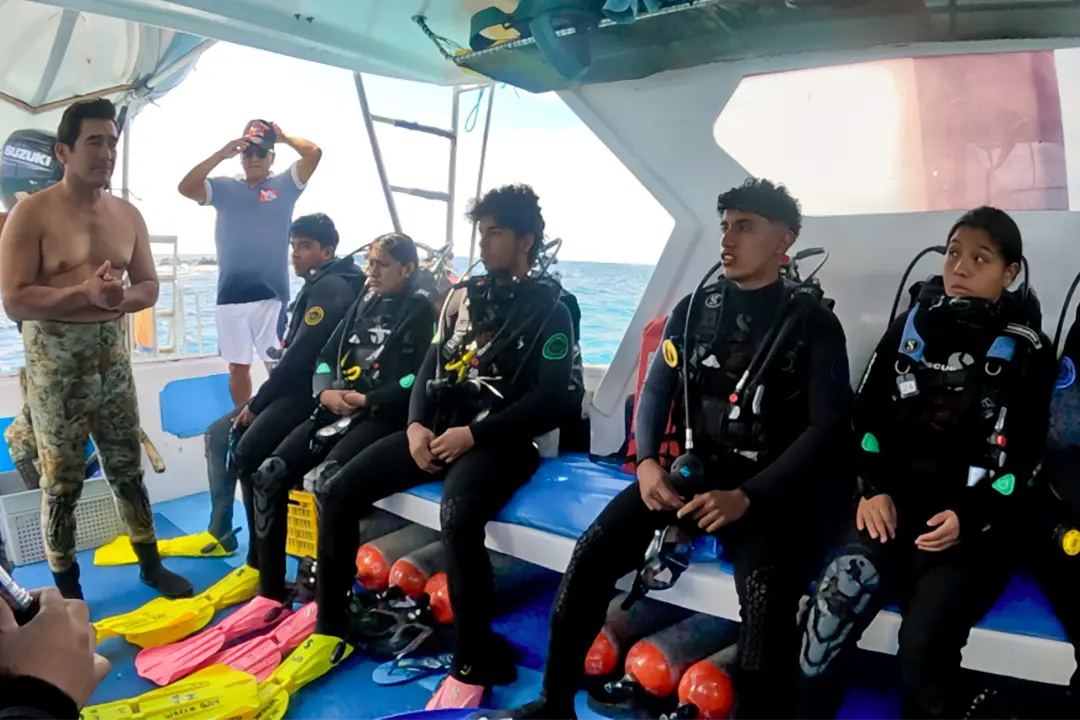
Photo: ©Scouts Galápagos
Since 2022, Galapagos Conservancy is working with the Galapagos National Park Directorate on the Conservation and Management Plan of the Galapagos Pink Iguana ( Conolophus Marthae ). This plan will be implemented for the years 2022-2027. The species was discovered in 1986, and it was formally described in 2009. There are only 300 individuals left. It is imperative to protect the pink iguana. The plan is detailed, and prioritizes the control of invasive species while conducting research in order to fill critical holes in our understanding of iguana ecology.
A team of eight scientists and rangers from the Galapagos Conservation Society embarked recently on an expedition to the Wolf Volcano in northern Isabela Island. This is the only habitat known for the pink Iguana. Our team was fulfilling our responsibility to save the species by monitoring the population, assessing the habitat, and understanding the threats that it faces. Information gathered will be crucial in determining if and how the plan can move forward to its second phase, which could include creating a captive breeding program or a head-start to increase the survival rate of pink iguanas.
Conservation: Advances and Challenges
The expedition revealed important insights into the progress made and the challenges faced in saving pink iguanas from extinction. It was encouraging to see healthy adults. No neonates or juveniles have been detected. Numerous tracks of feral cat were found during this expedition. This raises concern over the cats’ role in decreasing the survival of the pink iguanas.
Extending the Benefits from These Expeditions
These expeditions are primarily designed to protect the pink Iguana. However, their impact goes far beyond that of a single species. Every visit to Wolf Volcano provides an opportunity to monitor other endangered species in the region. On a recent expedition, for example, 55 yellow Galapagos Iguanas were observed ( Conolophus Subcristatus), including five neonates. These data are crucial to the refinement of conservation strategies for species that live in similar habitats. This information is also useful in determining the possible impact of yellow iguanas on pink iguanas.
These expeditions collect important data about the giant tortoises that are endemic to the Volcano ( becki ). The observations included male, juvenile, and female tortoises. Females are found more often at lower elevations during nesting season. Our conservation team monitors the tortoises’ well-being, and identifies any threats that they may face. The park guards are attempting to stop an exotic guava species from invading the Wolf Volcano.
The Pink Iguana Conservation and Management Plan : A Pathway to Recover
The 2022-2027 Pink Iguana Conservation and Management Plan has been strategically organized to guide our efforts. We are focusing on filling in knowledge gaps about pink iguana ecologie during the first phase of 2022-2024. Where necessary, we also control invasive species. We are committed: If we don’t see the desired results, like increased natural recruitment by the third year, we will move on to the next priority in the plan, which is implementing a breeding and rearing program. We can respond to challenges by adapting our approach and pivoting to new strategies to ensure the survival of a unique species.
Committed to Long-Term Sustainability
Galapagos Conservancy and our partners are fully committed to the conservation of the pink iguana. Quarterly expeditions to Wolf Volcano are part of our active implementation of the Management Plan. These expeditions are used to monitor the iguana populations and reduce predators, improving the conditions for native species recovery, including pink iguanas as well as other species that inhabit the vulnerable area.
The future of the Pink Iguana depends on the continued efforts and commitment of those involved in its protection. In the years leading up to 2025, the results of these expeditions will determine the next steps in the preservation of this iconic species from the Galapagos Islands.
A Call to Action
These findings go beyond data collection and serve as a powerful message about our shared responsibility for wildlife conservation. As Dr. Carrion has stressed, the absence of pink iguanas in their young age highlights the need for greater intervention. Our Conservation Director, Jorge Carrion, stresses the importance of this for the long-term sustainability of the species.
We returned from the expedition with not only valuable data, but also a renewed hope and a vision. Together, we can ensure a sustainable future on Wolf Volcano for pink iguanas and yellow iguanas. The responsibility of protecting the wildlife on Wolf Volcano falls to all.
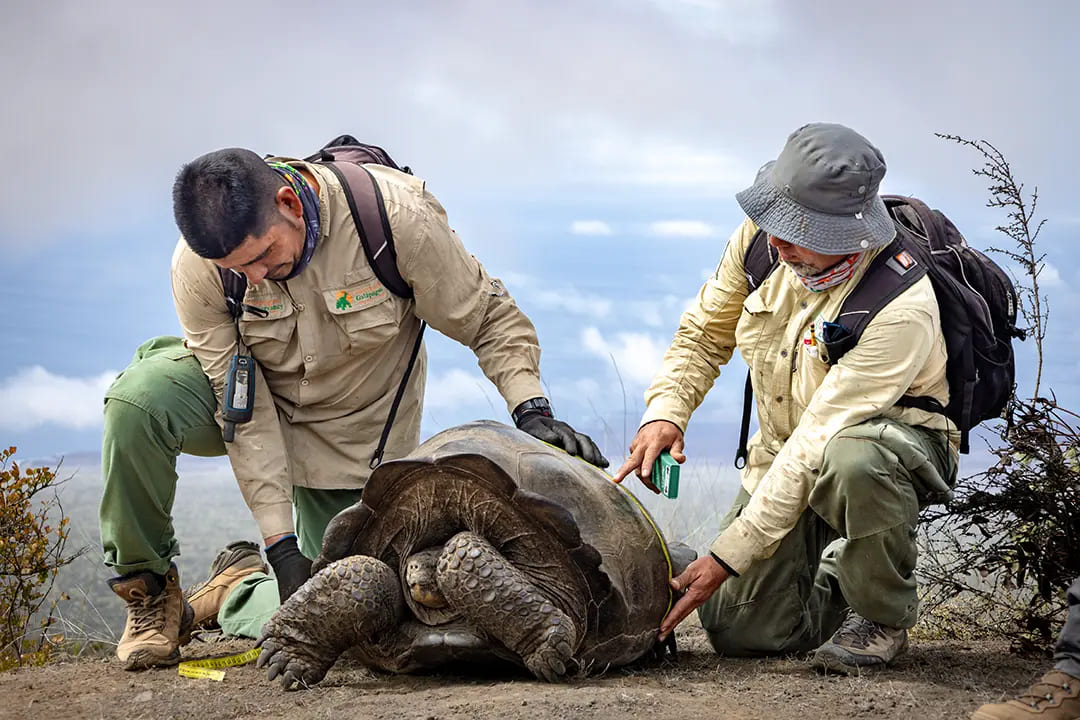
©Galápagos Conservancy
Galapagos Conservation understands that conservation of the unique biodiversity on the islands requires engagement with the whole community.
Galapagos is home to many local communities that have a valuable resource – a generational, deep understanding of the environment. Su local ecological knowledge proporciona una vision matizada de los ecosistemas y las especies que habitan en las islas, ayudando a los esfuerzos de conservacion.
The Galapagos Conservation team is mostly based in the islands. They not only share a deep commitment to protect this unique place, but they also understand the realities of that area. Galapagos Conservancy is deeply connected with the challenges and opportunities that we face. We’ve developed more sustainable and effective conservation strategies by combining local knowledge with modern scientific approaches.
Conservation collaboration with local communities
Conservation is not something that can be imposed. It must involve those who live in the ecosystems. With around 30,000 residents relying on nature for their livelihoods–whether through tourism, fishing, or agriculture–Galapagos Conservancy promotes a community-centered approach. We encourage sustainable practices by involving the local community in protecting their environment. This benefits both their everyday lives and ecosystems that they depend upon.
Empowering Galapagos for a Sustainable Future
We believe that the first step in creating a conservation culture on Galapagos is to empower its residents. The Sustainability Education Program is a program that works with teachers on the islands to reach over 7,000 students. The program ensures that environmental education is a part of the curriculum for all students in Galapagos. We also support local entrepreneurs by offering grants to encourage community-led, sustainable projects. Thanks to the generosity of our donors since 2021, we’ve funded conservation projects which engage communities in protecting Galapagos ecosystems. This effort demonstrates our commitment to empowerment and sustainable development, showing the tangible impact that working with local communities can have.
A sustainable future is in sight
We are confident that working together and empowering the local communities, we can create a sustainable and prosperous future for Galapagos. We are creating a network of environmental stewards by integrating environmental education and support local entrepreneurs.
As our general director, Dr. Washington Tapia says: “The success and collaboration of the local communities is often crucial to our conservation work on Galapagos.” We can protect the biodiversity of this archipelago by supporting initiatives from the local communities.
This comprehensive approach reinforces local communities’ commitments to protect their environment, and ensures sustainable management of Galapagos natural resources. It benefits both the people and the ecosystems.
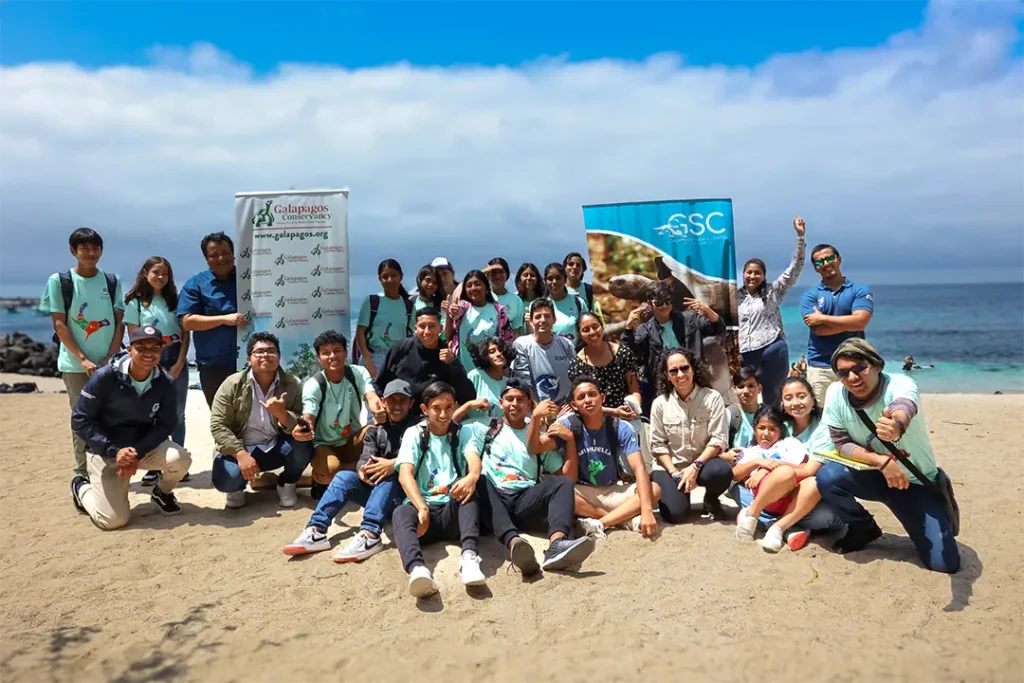
©Galápagos Conservancy